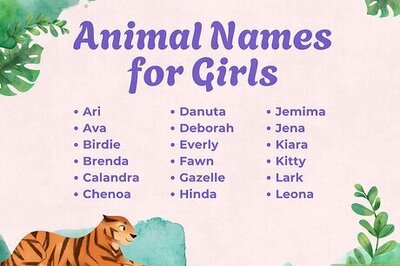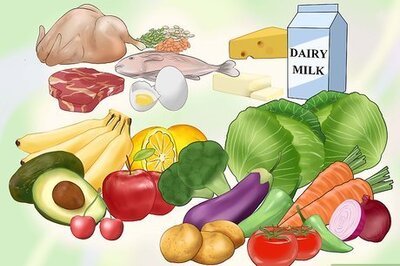
views
What are towel lines and why are they there?
The towel lines are called a Dobby border. These lines form what is called a Dobby border. "Dobby" is the name of the weaving attachment that is traditionally used to create the geometric pattern itself. The Dobby border differs in construction and texture from the rest of the towel, which is typically made from looped cotton. Dobby borders are woven tightly, creating a flat, neat, and structured edge. Although it’s typically found at the bottom or top ends of a bath towel, the placement can vary depending on the towel brand. Durability: Dobby borders are usually woven tightly along the edges of towels, providing structural stability, reducing fraying and keeping towels intact longer. Shape retention: Dobby border helps the towel maintain its tidy and iconic rectangular shape during washing and over the years. Aesthetics: Dobby borders add a touch of flair to bath towels, offering a creative departure from the woven cotton of the rest of the towel. Better grip: Dobby borders are textured and therefore help create better grip, making it harder for the towel to slip out of your hands while you’re drying yourself off.
Do towels need a Dobby border?
No, towels don’t need Dobby borders, and many don't have them. While a Dobby border can be both a stylish and functional addition to a bath towel, towels don’t need to have Dobby borders. The main purpose of a towel is to absorb moisture, which can still easily be done without the iconic geometric strip. Dobby borders do help maximize the durability of the towel by helping it retain its shape while minimizing fraying, but other factors do contribute to the longevity of a bath towel. For example, fabric weight and fiber content equally impact a towel’s long-term utility. If you like the look of a Dobby border, buy a towel with it! If not, don’t. It’s totally up to you.
How to Properly Care For Dobby Border Towels
Wash your towels regularly. Recent studies show that most people use their bath towels about 5 times before they toss them in the hamper. Although this number doesn’t seem immediately alarming, towels are breeding grounds for bacteria, including the deadly E.coli. Wash your towels more frequently, about every two uses, especially if you have small children, as they are more at risk.
Limit or skip fabric softener. Fabric softener can add a beautiful scent to your clean clothes, from tropical paradise blooms to crisp beachy breezes. However, fabric softener can leave a waxy substance on the towels, reducing the fibers’ absorbency. If you feel like you need to dry yourself vigorously and at length post-shower, your fabric softener’s dulling properties may be to blame.
Repair frayed edges to extend the life of your towels. It’s normal for your Dobby border to fray, but there are a few steps you can take to restore its former glory. With small scissors, snip the loose threads carefully without yanking. If you notice the fraying is getting worse, you can use a bit of fabric glue to help seal problem areas. If the towel is too frayed to use on your body, you can repurpose it for pets, cleaning up, or even as mats.
How can you tell if a bath towel is high quality?
Softness When it comes to bath towels, softness is measured in GSMs, or grams per square meter. Ranging from 300-900 for cotton towels, this number is meant to reflect how plush and heavy a towel is. The higher the number, the softer it will feel on the skin, and therefore, the higher the quality of the towel. Choose softly!
Absorbance GSM also aligns with absorbency. Higher GSMs will be thicker and more absorbent than lighter towels with lower GSMs. One important note is that the higher the GSM, the tougher the towel will be to clean in the wash due to its thickness. So, when searching for the perfect bath towel, like a self-care Goldilocks, try to find a good balance between lightness and a quality GSM.
Construction Dobby borders aid in the construction of a towel, helping them keep their shape and structure. Well-constructed towels typically have this strip of tight stitching, along with densely woven loops that catch water during the drying process. Additionally, high-quality towels have a weight to them without being overly heavy.
Durability A good bath towel that stands the test of time is one that remains absorbent, retains its shape, and has no evidence of fraying. High quality towels typically last between 2-5 years, depending on how kindly you treat them. Look for a higher GSM, wash often, and nix the fabric softener. Your towels are sure to thank you!
The History of the Towel
The bath towel has roots in 17th-century Turkey. Historians believe that the first ancestor of the modern bath towel was created in Bursa, Turkey, in the 1600s. During the reign of the Ottoman Empire, bath houses were all the rage, and residents in this populous Turkish city are thought to have used woven linens to dry themselves off. They were known as pestamels and were used as wraps around the body post-bath. However, humans have been using early towel prototypes since antiquity. The Ancient Egyptians, for example, likely used natron, or a salt mixture, to dry their bodies after a bath. They may have also used linens, which they were famous for, and animal hide. Ancient Romans took baths and then used a tool called a strigil to scrape away oil, sweat, and other moisture. A cloth may have been used to absorb the more stubborn areas. Ancient Greeks also used a strigil, curved and often made from bronze.















Comments
0 comment